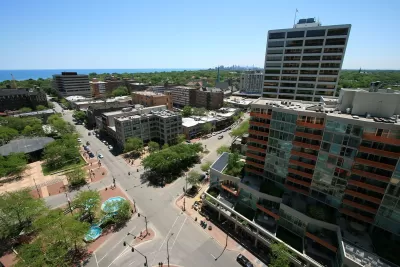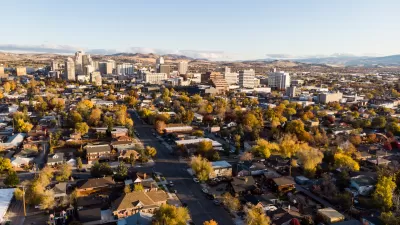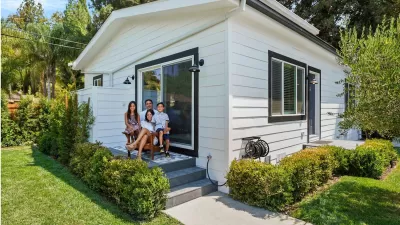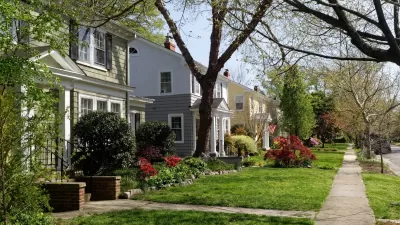A worker-owned developer in Evanston uses sustainable materials to build efficient, affordable ADUs to help homeowners create generational wealth.

A cooperatively owned housing developer in Evanston, Illinois could provide a model for efficient, affordable construction, writes Ashira Morris in Next City. The Evanston Development Cooperative, which specializes in building accessory dwelling units (ADUs), was founded in 2018 when the city started revising its zoning code to permit 'granny flats.'
Before EDC’s founding, the city did the work of legalizing existing ADUs, which were technically illegal because of changes made to city zoning in the 1950s to prioritize single-family housing. In 2020, thanks in part to EDC’s advocacy, two additional key changes were made: allowing the construction of ADUs on any residential property and legalizing internal ADUs, such as an attic or basement conversion.
The update also widened the ADU rules to include duplexes, not just single-family homes. "Resolving that line item was an equity issue, [EDC co-founder Robinson] Markus says," noting that Evanston's duplexes are disproportionately located in communities of color. "'Only certain parts of the city were allowed to build intergenerational wealth and increase their property value through this mechanism,' [Markus] says, 'while other parts of the city were often being denied this opportunity.'"
To share their experience, EDC co-published a step-by-step ADU guidebook with the city. "The co-op is also working with the city on an affordable housing pilot project, with one two-bedroom unit intended for a small family currently under construction behind a duplex." In the future, EDC hopes to scale up their operation with the same worker-owned model.
FULL STORY: Cooperatively Owned Builder Sees Affordable Housing, Climate Action in ‘Granny Flats’

Trump Administration Could Effectively End Housing Voucher Program
Federal officials are eyeing major cuts to the Section 8 program that helps millions of low-income households pay rent.

Planetizen Federal Action Tracker
A weekly monitor of how Trump’s orders and actions are impacting planners and planning in America.

Ken Jennings Launches Transit Web Series
The Jeopardy champ wants you to ride public transit.

USDOT Waters Down Self-Driving Car Regulations
The agency is reducing reporting requirements for autonomous vehicles and cars with self-driving features, prompting concern among safety advocates who say transparency is essential to the safe deployment of AV technology.

‘Minnesota Nice’ Isn’t so Nice When You Can’t Find a Place to Live
The Economic Development and Housing Challenge Program can help address the scourge of homelessness among Indigenous people.

NYC Open Streets Organizers Call for City Support
The number of open streets projects has dropped year after year as volunteer groups struggle to fund and staff them.
Urban Design for Planners 1: Software Tools
This six-course series explores essential urban design concepts using open source software and equips planners with the tools they need to participate fully in the urban design process.
Planning for Universal Design
Learn the tools for implementing Universal Design in planning regulations.
Heyer Gruel & Associates PA
Ada County Highway District
Institute for Housing and Urban Development Studies (IHS)
City of Grandview
Harvard GSD Executive Education
Toledo-Lucas County Plan Commissions
Salt Lake City
NYU Wagner Graduate School of Public Service





























